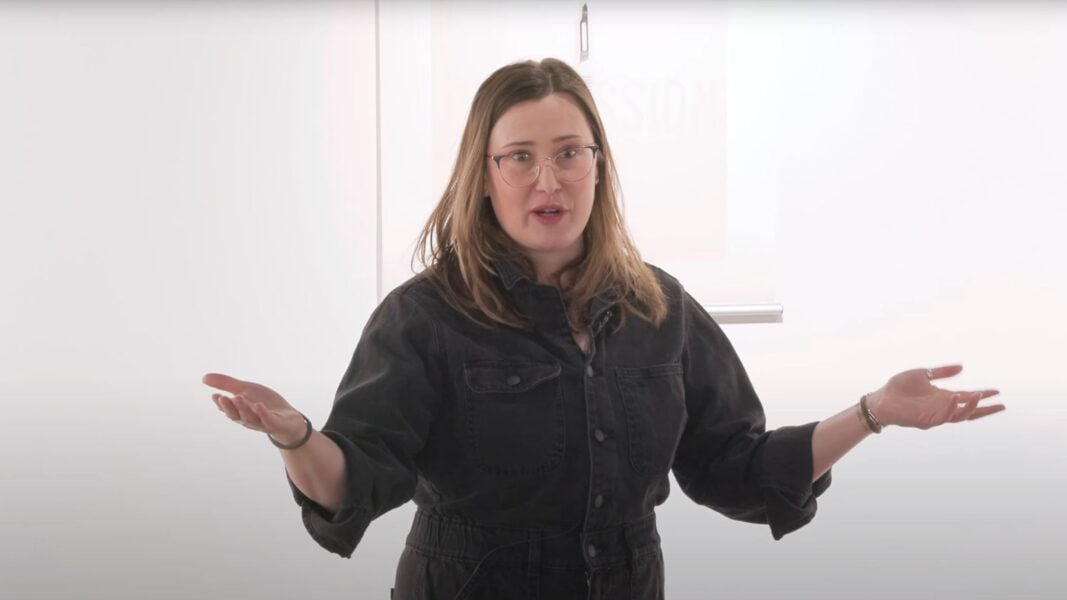Artist Lisa Zirbel shared her art exhibition, “A Call to Care,” with the Newman University community in February.
Using photography and patient testimonies, Zirbel’s work encouraged viewers to confront the urgent need for more empathy and equity in health care.
Overview of conversation topics
Missed the event? Don’t feel like watching the full video? Read on to skim or find timestamps of specific topics covered by Zirbel.
Introduction (00:00-00:43)
Lisa Zirbel thanks the audience and organizers and begins by engaging the audience with questions about their own experiences with health care.
Frustration with health care (00:43-02:42)
Many attendees relate to feelings of being unheard or rushed in medical settings. A discussion emerges about systemic issues, including the high cost of medications and barriers to effective care.
Personal motivation for the project (02:42-05:19)
Zirbel shares her personal struggles with health care, including her own chronic conditions and her sister’s experience with over-aggressive cancer treatment. Her work focuses on the lack of compassion in health care, particularly for women.

Gender bias in medicine (04:00-05:19)
She highlights disparities, such as the late introduction of female crash test dummies (2011) and gender-biased drug dosages, illustrating systemic medical neglect of women’s health.
Artistic process & concept (05:53-07:45)
Zirbel purchased a gynecological kit online and photographed it as if they were portraits, emphasizing the humanity behind medical tools. She paired the images with words from patient interviews to symbolize the disconnect between clinical sterility and human experience.
Emotional reactions & interpretation (07:45-09:36)
Different individuals respond uniquely — some feel discomfort recalling personal experiences, while medical professionals view the tools as functional. This contrast underscores the emotional and clinical divide in health care.
Ethical research & data (09:36-11:28)
She ensures accuracy in presenting medical disparities, highlighting that while health care is improving, progress is too slow, making her work increasingly relevant.
Design choices & symbolism (12:03-14:47)
Elements like pink bathroom tiles reference gendered experiences, and words on the images convey irony (e.g., “comfort” paired with a painful tool). The embossed text represents invisible illnesses, reinforcing the theme of unseen suffering.
Future impact & ideal audience (19:29-21:50)
She hopes her work reaches medical professionals, hospitals and conferences to inspire systemic change and emphasize the importance of compassionate care.
Final thoughts (22:39-24:11)
The most common words from interviews were “trust,” “listening” and “access,” revealing that patients primarily seek care and validation in medical experiences.
Monthly artist talk and First Friday exhibitions
The Steckline Gallery features a new artist each month and hosts not only an Art for Lunch talk over lunch with the artist but also a First Friday reception with wine and light refreshments.
Interested in being featured? Contact Director of the Steckline Gallery Emily Ritter at [email protected].
Follow Steckline Gallery on Facebook
Newman University’s Steckline Gallery is a professional art gallery with monthly shows rotate through the gallery changing each First Friday during the show season.

